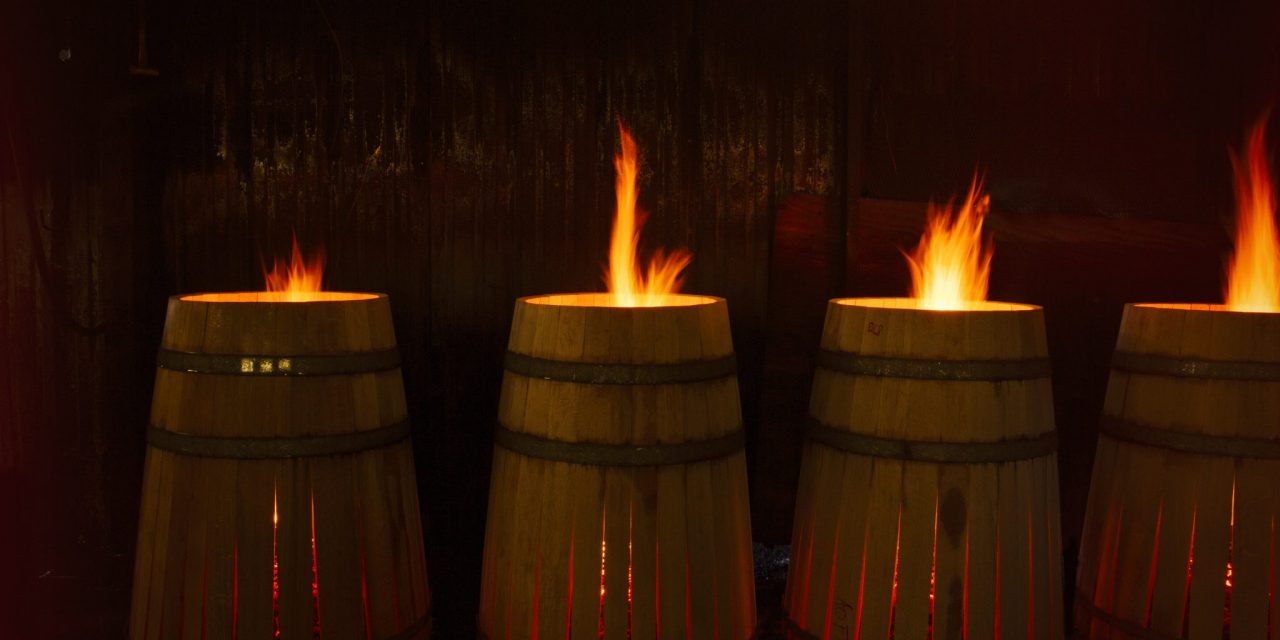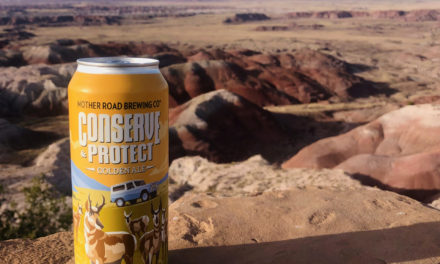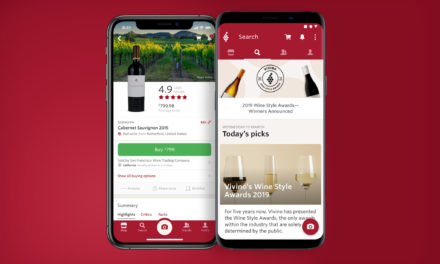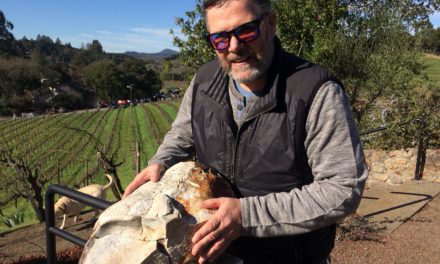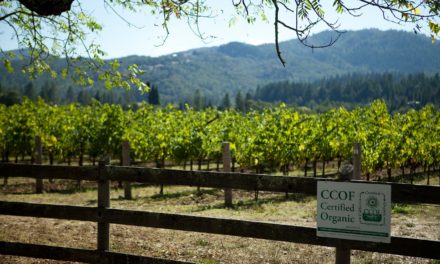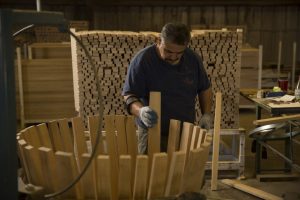
A cooper at Nadalie USA in Calistoga [tomsandersphoto.com]
The barrel family tree
According to Henry H. Work in Wood, Whiskey and Wine: A History of Barrels, wooden barrels were developed by the Celts in the first millennium BC. As their design and quality became increasingly refined between 1300 BC and AD 200, barrels replaced amphorae for transporting and storing goods. It’s unclear exactly when aging beverages in wood started, but according to Work, it was common practice by about 1095 AD.
Barrels are prized not only for the nuanced flavors they add, but also because they’re one of the greatest expenses for today’s beverage makers. For whiskey distillers, it’s their single greatest expense. After grapes, it’s the second greatest expense for winemakers. Today, cooperages are the “silent partner” in wine and spirits production, Work asserts. Beverage producers agree and now proudly advertise a product’s time in wood as a market differentiator.

“Nothing truly replaces a barrel. It’s essential to me to have high quality barrels.” — Michael Beaulac, Pine Ridge Vineyards
For Michael Beaulac, winemaker at Pine Ridge Vineyards in Napa, Calif., the cost is inconsequential: “Nothing truly replaces a barrel,” he says. “It’s essential to me to have high quality barrels. I don’t use other options.” He’s not alone in this sentiment.
Why oak?
Wood containers let oxygen interact with the liquid inside on a chemical and microbial level. Barrel materials once included poplar, elm, fir, and chestnut, but over generations, oak has become the mainstay material for beverage aging and finishing. Most beverage producers now use either European or American white oak, although some experimentation continues.
“In the world of barrels for wine, spirits, and beer, oak is definitely the preferred choice,” says Jason Stout, vice president of marketing and business development for Independent Stave Company in Lebanon, Mo., who estimates, “99.9 percent of barrels are made with some species of oak.”
There’s a simple reason other woods aren’t requested say experts, including Darren Whitmer, general manager of Speyside Bourbon Cooperage in Jackson, Ohio: “They really don’t work well.”
Typically, American whiskey spends time in American oak. American winemakers tend toward both American and French oak with a “very, very small” contingent using Hungarian oak, says Whitmer. These traditional preferences are being adjusted.
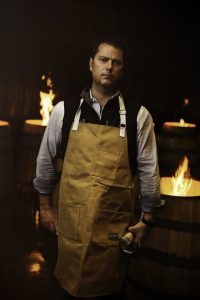
“Automation and machines play a large part in the production of barrels—but we always rely heavily on the expertise of our coopers.” —Vincent Nadalie, Nadalie USA [tomsandersphoto.com]
“Hungarian oak is typically priced between French and American oak,” he continues. “We’re noticing a decline in the demand for Hungarian oak alongside a corresponding increase in the demand for French oak. We attribute that to the quality of recent harvests, along with the steady rise in wine prices.”
For Beaulac, extensive cooperage trials, consisting of the same wine in two each of different barrels with different toasts, help ensure excellent products. For a recent Cabernet Sauvignon cooperage trial, he used 26 different barrel types—a total of 52 barrels; the results were tasted in January 2017 by about 80 winemakers. This level of rigorous evaluation helps Beaulac decide on products come barrel season (between March and April), when orders for harvest are placed. He now uses, for example, 100 percent French oak Nadalie barrels for his AVA wines, but places his Napa Valley Cabernet Sauvignon in American oak.
Whiskey distillers use “almost all oak,” says Dave Pickerell, master distiller for WhistlePig Distillery in Shoreham, Vt. Some regions of the world have laws dictating what materials can be used in spirits production. In the United States, for example, “bourbon must be aged in a new, charred, white oak barrel,” says Whitmer.
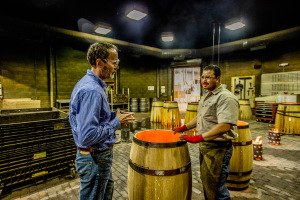
“Today we see winemakers and distillers exploring the effects of oak from different regions and toasting regimens on a range of wines and spirits, upending the ‘traditional’ course.” —Quinn Roberts (left), Tonnellerie Ô
Barrel aging
“Today we see winemakers and distillers exploring the effects of oak from different regions and toasting regimens on a range of wines and spirits, upending the ‘traditional’ course,” says Quinn Roberts, master cooper at Benicia, Calif.-based Tonnellerie Ô, a cooperage that produces both French and American oak barrels to customer preference, which ranges beyond oak source to include toast level. Both choices, Roberts says, are “best decided by the winemaker or distiller. We work hand-in-hand with our customers to produce the barrel they require.”
“The main reason most barrels are made of oak is due to porosity and pragmatism,” says Pickerell. Barrels need to be as thin as possible for easier transportation without leaking, he explains. White oak is less porous. To ideally hold liquid, for example, a cherry-wood barrel would have to be at least four inches thick. Other wood characteristics to consider include the flavors and aromas they impart, as well as how extended contact may change a beverage’s texture and mouthfeel.
“Wine should never be dominated by oak,” adds Beaulac. “The oak is framing the wine. It’s like art: You see the artwork and notice the frame. The frame brings it together, but it’s not the star.”
White oak is dense with “wood goody,” which is how Pickerell describes “the seemingly ineffable characteristics contributed by lignin and wood sugars when a liquid comes into contact with the wood.” European oak barrels tend to impart vanilla and spice to whiskey as it ages; American oak brings out coconut and vanilla notes. These elements can be further shaped by factors such as moisture and toasting—the latter brings out spice and clove notes from the wood sugars, which can morph into coffee or toffee flavors, even butterscotch.
The wood grade, one of three grades assessed based on the number of growth rings per inch, also makes a difference, according to Pickerell. These range from eight to 12 rings per inch to 26-plus per inch. “This has more impact than might you expect given that most everyone is using white oak.”
Says Nadalie, “We feel traceability is as important as consistency in guaranteeing quality barrels. In 1954, our company began buying French Oak trees at state auctions. This lets us know everything about the life-cycle of the wood that goes into our products, as well as the grain tightness.”
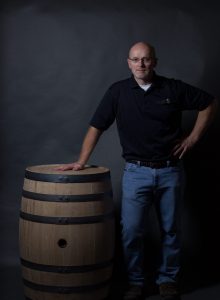
In the United States, for example, “bourbon must be aged in a new, charred, white oak barrel,” says Darren Whitmer of Speyside Bourbon Cooperage
Upgraded craftsmanship
Technology is providing a welcome assist alongside traditional craft techniques at several cooperages. This includes making it possible for barrel makers to construct and char with greater precision, ultimately meaning results can be more easily replicated for those beverage makers working with new barrels, especially wine and whiskey producers.
“Manufacturing changes that may not be evident to the distiller are nevertheless helpful from a manufacturing standpoint,” says Whitmer. Speyside, for example, added technologies that lets it offer “a very consistent, repeatable process” for making barrels.
“To guarantee consistency, Nadalié was one of the first cooperages to use an automated toasting process. It uses lasers to continuously monitor toasting temperatures,” says Nadalie. “Automation and machines play a large part in the production of barrels—but we always rely heavily on the expertise of our coopers.”
Coopers are also researching various factors that can influence final products—both barrels and the wine and/or spirit aged in them. Tonnellerie Ô, for example, is investigating the “location and duration of French oak seasoning on the organoleptic characteristics of finished barrels,” says Roberts. The company hopes to discover how the climatic and environmental conditions of a specific place “have a unique influence on the sensory properties of oak staves, and whether there are benefits to extending the natural aging of stave wood prior to barrel construction.”
Second Life
Used barrels—whether they initially held wine or spirits—are getting a second life. Bourbon barrels, for example, which have long been reused to age generic whiskey, Port, or other spirits, are now being sought out by winemakers. Whiskey distillers are increasingly using barrels that originally housed Madeira, Port, sherry, or sauternes for similar cross-aging.
These “impart meaningful character differences” without requiring a beverage maker to use flavoring, says Pickerell. The idea is to add “fun, extra character without destroying the fact that it’s whiskey,” at the same time providing “something materially different and tasty.”
Where used barrels once fetched roughly $75 each, the secondary market is now in the $20 to $25 range. The price varies widely based on condition and availability. Reliable products are typically difficult to source through brokers. Second-hand rum and tequila barrels, for example, are frequently in poor condition by the time they’re available for reuse.
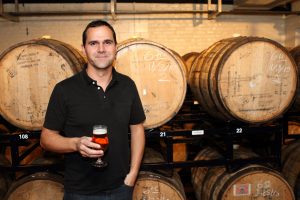
“[It’s] about pushing boundaries. Consumers want new things all the time and they want it now.” —Steven Pauwels, Boulevard Brewing Co.
Sourcing barrels for finishing his whiskeys was initially challenging, Pickerell says. The broker he eventually used redacted the source; however, years later, one wine producer revealed its identity. “That [those barrels] came from Château Latour isn’t a bad thing for people to know,” says Pickerell. With WhistlePig and its products’ quality established, he says European wine houses now “want us to use their barrels in finishing.”
All these businesses are looking for a partnership to help them achieve a reproducible flavor profile from batch to batch. In some instances, a producer may have stumbled on a combination that’s mercurial. This can be a co-branding opportunity, but the need for consistency makes such partnerships challenging. “The co-branding part is a tough one,” agrees Pauwels. “The majority of distillers aren’t keen on co-branding with a brewery. They don’t know what the finished beer is going to be. They’re conscious about their brand image—and they should be.”
Pickerell says more opportunities “are beginning to develop.” WhistlePig’s brand reputation has resulted in a cobranding opportunity with a brewery, for example, which will ultimately provide increased name recognition for both brands.
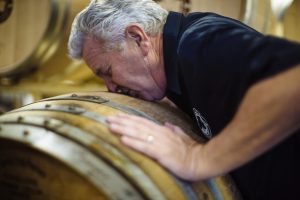
“We love whiskey touching all kinds of woods.” —Brendan Moylan, distiller and brewer
Back and forth
A sufficiently diversified operation can take a cue from Brendan Moylan, whose brewing and distilling domain includes Marin Brewing Company, Moylan’s, Stillwater Spirits, and Moylan’s Distilling (Marin and Sonoma counties in Northern California). Multiple barrel movement is the norm. “We love whiskey touching all kinds of woods,” he says, explaining that barrels, ranging from five to 70 gallons, constantly “bounce back and forth between the brewery and distillery.”
The cross-use marries whiskeys with imperial stouts and barley wines; the rich malty beer flavors infuse the spirits as they age. “Small craft distillers are a little more willing to do something different to make something taste a little bit better,” says Moylan, who adds cross-aging can be a product differentiator in a crowded market.
These wines, beers, and spirits command a premium by virtue of production costs. “We all have our distilling reputations on the line with our peers and the general public. But we’re not bashful. We spend extra money to get these barrels, which needs to be reflected in the price.”
Pickerell agrees. “It’s a bit of a risk,” he says. “For a triple finish on my whiskey, I’m committing to at least four barrels. That adds substantially to the cost, and I have to recoup that.” There’s also extra time and labor associated with moving the whiskey between barrels. WhistlePig’s Old World Cask Finish, for example, is a 12-year-old finished in sauterne, Madeira, and Port barrels that commands $124.99 per bottle at retail.
Because product innovation in the alcoholic beverage industry is at an all-time high, according to Stout and others, barrel use and reuse is a practice unlikely to ebb, as innovators throughout the beverage industry concoct new techniques and beverages to take advantage of what time in a barrel—new or used—offers.

